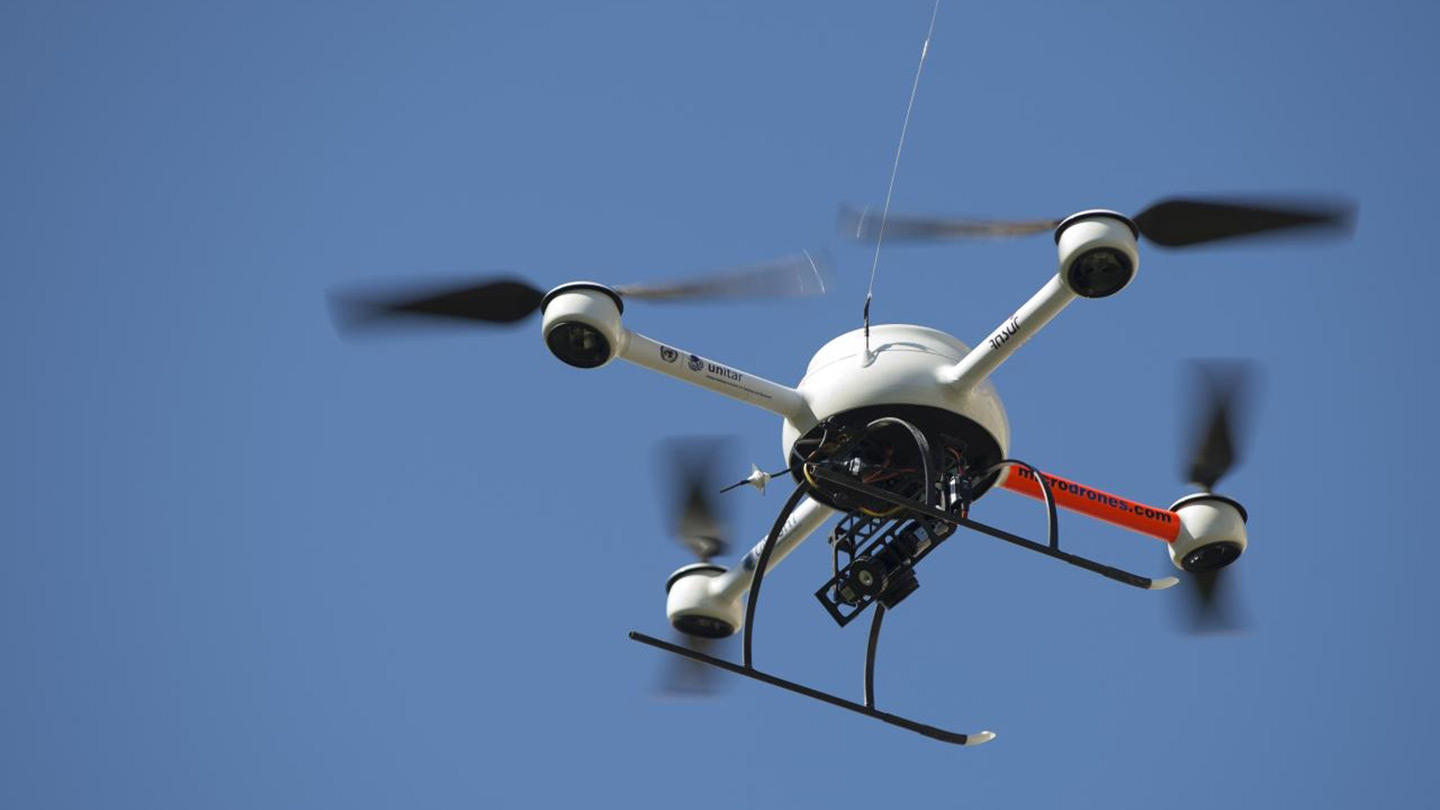
United Nations Institute for Training and Research (UNITAR) humanitarian reconnaissance drone.
Courtesy UNITAR/Jean-Marc Ferré
Dr. Bryan L Mesmer, an associate professor and researcher at the University of Alabama in Huntsville’s College of Engineering, will be teaming up with academics, other researchers and postgraduate science and technology students from four countries on a $1.26 million project supported by the North Atlantic Treaty Organization (NATO) Science for Peace and Security (SPS) Programme to develop pioneering solutions for disaster relief using multi-agent drone systems.
The NATO program involves a competition where student teams tackle technical challenges, such as mitigating the disruption of GPS signals, successfully navigating hazardous environments, improving real-time decision making and fault tolerance for the vehicles and ensuring effective communication and coordination between UAVs. The project seeks to increase the level of autonomy of single and cooperative drone platforms by adopting and developing the most advanced AI-based algorithms and technologies.
The universities collaborating with UAH, a part of the University of Alabama System, include City University of London (NATO Partner Director for this program), the University of Klagenfurt in Austria and Delft University of Technology in the Netherlands.
“Drone technology has the potential to play a significant role in the management of crises and civil emergencies,” Mesmer notes. “In recent years, drone technology has advanced significantly and has been adopted by various organizations and governments for various purposes, including disaster response.”
How disaster relief drone technology works
Drones can provide real-time images and data of disaster-stricken areas, allowing first responders to quickly and effectively assess the situation and prioritize activities in civil emergencies, typically involving searching for survivors, assessing damage and delivering assistance to the affected areas.
Dr. Bryan L Mesmer, an associate professor in the Department of Industrial & Systems Engineering and Engineering Management (ISEEM) at The University of Alabama in Huntsville (UAH).
“For example, drones equipped with thermal imaging cameras can quickly scan large areas for signs of life, even in areas where visibility is limited, such as during a hurricane or after an earthquake,” Mesmer points out. “This information can be invaluable for first responders who need to quickly identify the areas that need urgent assistance. The adoption of multiple UAVs in disaster response has the potential to greatly improve the effectiveness and efficiency of crisis management efforts.”
In fact, a fleet of drones can be deployed in a coordinated manner to gather information, survey damaged areas, deliver assistance and perform other essential tasks with improved coverage and speed, especially valuable in disaster scenarios where quick action is required. Equipped with different sensors and tools, one drone might be equipped with a thermal imaging camera to search for survivors, while another could provide a high-resolution camera to survey the damage. A multi-UAV system also reduces the risk to human life in unstable or hazardous conditions.
“In addition, a multi-UAV system can improve coordination and communication among teams of first responders,” Mesmer notes. “With multiple drones gathering information and transmitting real-time data, response teams can quickly and effectively coordinate their efforts and make informed decisions. This can greatly improve the speed and efficiency of disaster response efforts.”
The project came about thanks to previous connections forged in association with the Dean of the UAH College of Science, Dr. Rainer Steinwandt. “The SPS Programme was looking to initiate this new collaboration and involve a U.S. institution that had expertise in unmanned aerial systems (UAS),” Dr. Mesmer explains. “Thanks to previous research that Dr. Steinwandt had with the SPS Programme and research that myself and others are conducting on artificial intelligent systems with the Army, UAH was identified as an ideal candidate for collaboration.”
The SPS Programme promotes dialogue and practical cooperation between NATO member states and partner countries based on scientific research, technological innovation and knowledge exchange. The initiative offers funding, expertise and support to civil security-relevant activities that correspond to NATO’s strategic objectives. For more information, visit SPS Programme.